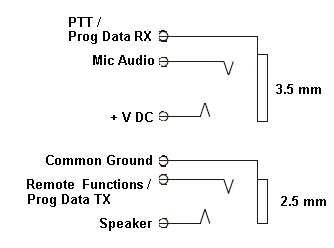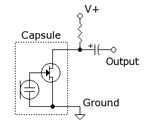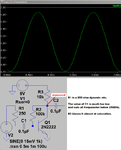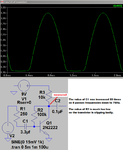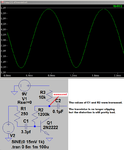aq_mishu
Full Member level 4

guys,
I need an assistance... stucked in here...
well, I have a radio shack headset+mic. I have modified it to work with my Radios... the first thing i did is i added a DIN5 connector... then I intended it to be used with a kenwood uhf walkie talkie... the pinouts are fine... perfect and correct... I made the exact companion for the DIN5 connector... it works... problem is elsewhere... it has a mic muff made of foam... yeah... surely a good thing... i am not interested to remove it... the electret mic is severely directional... thus i need to remove the muff and put it totally close to my mouth... still it's not so clear like direct without headset... thus other part can not hear me clearly...
now, i have checked and found several mic pre-amp made of transistor or op-amp... each of those are fine, except that first, it needs a vcc. I can get that from the radio set... (as the pin has a vcc port too). this requires to be also tied to mic as well... done... then suddenly discovered that the vcc is internally tied to the mic pin of the radio's pcb. thus it's creating a loop
any ideas on how to solve it?? because i need inline mic amp... but my mic pin of radio and headphone's mic is getting all in the same track...
I need an assistance... stucked in here...
well, I have a radio shack headset+mic. I have modified it to work with my Radios... the first thing i did is i added a DIN5 connector... then I intended it to be used with a kenwood uhf walkie talkie... the pinouts are fine... perfect and correct... I made the exact companion for the DIN5 connector... it works... problem is elsewhere... it has a mic muff made of foam... yeah... surely a good thing... i am not interested to remove it... the electret mic is severely directional... thus i need to remove the muff and put it totally close to my mouth... still it's not so clear like direct without headset... thus other part can not hear me clearly...
now, i have checked and found several mic pre-amp made of transistor or op-amp... each of those are fine, except that first, it needs a vcc. I can get that from the radio set... (as the pin has a vcc port too). this requires to be also tied to mic as well... done... then suddenly discovered that the vcc is internally tied to the mic pin of the radio's pcb. thus it's creating a loop
any ideas on how to solve it?? because i need inline mic amp... but my mic pin of radio and headphone's mic is getting all in the same track...


